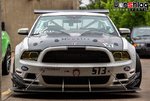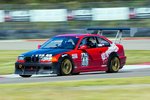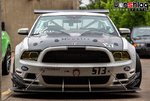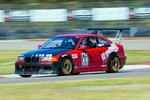ChrisM
Mostly harmless.
What Olaaf said.
This site may earn a commission from merchant affiliate links, including eBay, Amazon, and others.
*Well over* It's a common industry practice to quote numbers @150mph.100lbs at what speed?
Pretty sure this is the Steeda "wing":
https://www.alibaba.com/product-detail/Automobile-Universal-RC-Carbon-Fiber-Race_60591720352.html
.
It's not just stability but GRIP. There is far more time to be had increasing cornering speed and grip with downforce than what is lost from drag in a straight line.Good points. So far only hpde.
I always divided in 2 the conversation:
1. Better suspension= better slow turns.
2. Better aero= better stability in medium high speed turns.
Don't looking for max speed on the straight. (For that I'll use hp..
With that wing rhr did a great job improving stability at all speed. (80 miles they declared up to 200lns at only 60mph!) However 2200$ is out of budget.
PP2 has a 'spoiler', not a 'wing'. It makes some downforce unlike the 'wing'. Not a ton, but better than the PP1 wing.What about the PP2 wing?
Well... that's kind of what Kyle said, but he did say all of that with the assumption that the car in question would be fairly limited on front aero df. And with the common "tiny flat splitter + non-ducted hood" that's probably the case.I like Kyle. I have watched all his videos. ...
So key word is compromise. Not too high(will increase drag and unbalance the front) not too low(will interference with the trunk and undo the downforce)



Steeda has a twisted race wing which is also a little "out"behind the back.So it creates in theory low pressure area behind the trunk and in theory increases also the pull of the diffuser. Once again" in theory" . That is the reason why I was hoping to find some "numbers"
Yea, don't worry so much about aero until you have maxed out the suspension, brakes, wheels/tires, made some power mods, and of course the #DriverModGood points. So far only hpde.
I always divided in 2 the conversation:
1. Better suspension= better slow turns.
2. Better aero= better stability in medium high speed turns.
Don't looking for max speed on the straight. (For that I'll use hp..
Here is my advice ... Don't touch your car. Hire a pro coach

That's awesome.Well... that's kind of what Kyle said, but he did day all of that with the assumption that the car were fairly limited on front aero df. And with a tiny flat splitter, non-ducted hood, that's probably the case.

He also said that putting the wing behind the car was advantageous for 2 reasons:
1. Leverage effect. The farther back the more torque it applies to the CG. This is a good thing when you are trying to make more rear df
2. The additive effect of the low pressure part of the wing interacting with the low pressure effect from a diffuser, when the element is behind the back of the car
And no matter how you read it, he still admitted that a high placed wing does get cleaner, more laminar flow above the roofline. More DF and a small increase in drag. He just kept prefacing that it will make too much df this way, due to an assumed lack of front df.

We have done a lot of wings (using AJ's Fulcrum element) mounted 4-8" above the roofline and 0-12" behind the car. They all make a lot of rear df. And with a 6-8" front splitter and a ducted hood, maybe add a couple of AJ's canards, its pretty easy to get enough front df to not make a "understeering mess".

My little BMW 330 has a 6" splitter and this high mounted rear wing and it is easy AF to drive on faster tracks. I also like that Kyle moved to ever larger endplates and explained why that is advantageous. His sentiments align pretty well with what we have been doing - so I really like Kyle.
Look, that Steeda wing is not an optimized race wing, no matter how much people want it to be. It is much too low, much too short of a chord, tiny end plates. Making 100 lbs of df at some unspecified speed is really small. Some of AJ's wings make 1000# or more.
Yea, don't worry so much about aero until you have maxed out the suspension, brakes, wheels/tires, made some power mods, and of course the #DriverMod
Truth. We have seen the results of this with some of our customers - proper coaching makes huge differences. Hard to beat this advice - but maybe get the car at least sorted and safe before you drop $5-10K on coaching.

And a data logging predictive lap timer is a cheap first step. And most coaches will require this at a minimum, at least.
Cheers,
And no matter how you read it, he still admitted that a high placed wing does get cleaner, more laminar flow up above the roofline.

And a data logging predictive lap timer is a cheap first step. And most coaches will require this at a minimum, at least.
Thanks for the precious info olaaf.Just to clarify, the airflow isn’t laminar, it is however, attached. At our sizes and speeds, airflow is always considered turbulent. If the airflow is attached or separated is the important distinction (hence the occasional use of vortex generators that delay the separation by stealing clean air and feeding it into the attached flow).
However, the placement (up/down) of the wing is highly dependent on wing design as I’ve been learning recently. Many racing wings are heavily cambered, like the fulcrum wing, and some are not (like the brooks wing). A heavily cambered wing is GENERALLY designed to be placed in a downwash situation, since the downwash air (which may or may not be attached) hits the wing element at an angle of attack. By placing a highly cambered wing up higher you need to run more AOA to regain the “lost” natural AOA of the downwash, and you increase the moment arm applied to the chassis.
So, to have a bit of fun, I took this generic and very simple CAD model of a car below and then used Javafoil, a free airfoil design & analysis application to create a wing based on the NACA 63-2013 profile, added a couple of small tweaks, and added a gurney flap.

The coolest thing about Javafoil (IMO) is that it can open jpg photos of airfoils. So, you can take a side on shot of your wing, splitter, or anything like that, and javafoil will open it, and let you manipulate the coordinates a bit if it needs cleaning. Remember to run the photo through perspective to orthographic projection filter in photoshop first, though. Then you can run your analysis. Plenty of tutorials out there on google. So, you can do this on your existing wing. As you’ll see in the polar plot, this wing stalls at about 8 degrees.
Since Javafoil spits out pure dimensionless coordinates, I sized this wing with a 5” chord. There are a couple of plugins to accept .DAT wing files, and I was able to use one for my CAD program (Fusion 360- check the “autodesk app store” for airfoil importer) to import the wing coordinates, and then extrude the profile into a solid and quickly slap on endplates and uprights and drop it on the car geometry. It’s about a 10% cambered wing. Some very cool airfoil tools are here: http://airfoiltools.com/plotter/index and Javafoil is a free download here: https://www.mh-aerotools.de/airfoils/javafoil.htm
Once I was done in Fusion, I exported the 3 iterations of the model and setup the openFoam cases. And then waited 60 hours as it churned through.
While I intended these runs to test my assumption that the “steeda” wing is much too close to the decklid to make any downforce, I was wrong in that assumption here. Since it’s a generic model, we don’t need to read very seriously into the values, but the wingless version made 0.2 points of lift. The low wing position version made -0.17 points of lift (downforce), and the high position wing made -0.09 of lift, and 0.02 more points of drag. Both runs were down at alpha (0) angle.
From looking at the post processing images, it seems that the extremely smooth deck lid nicely accelerates the airflow and helps it to stay well attached, assisting the suction side of the wing. I could be wrong in this assumption, as I’m a beginner in this field of aerodynamics.
So, in the real world one could install a wing on an adjustable height mount, install two manometers and put a go-pro pointed at those and get your wing height optimized..
Yeah, some do, some don’t even want to look at data. My coach refused to look at data until I corrected the “basics”, about halfway through the year. He even taped over my logger during test days so I couldn’t see lap times. All he needed to do was watch video or ride right seat. Data is not a panacea.. Unless you can see the issue, understand the issue, decided how you will fix the issue, and then actually do it... If Flyhalf is just starting in DE.. i'd spend the datalogger money on skidpad time and making sure the car was safe (brakes, etc.) and instruction. Enjoy the lack of chasing laptimes.
During my time in MX-5 Cup I would stare at the same (driver related) problem race after race, test after test, and the driver(s) in question couldn’t fix the problem which was inadvertently bleeding off brake pressure (not a little, a lot) during heel and toe downshifts.
A heavily cambered wing is GENERALLY designed to be placed in a downwash situation, since the downwash air (which may or may not be attached) hits the wing element at an angle of attack. By placing a highly cambered wing up higher you need to run more AOA to regain the “lost” natural AOA of the downwash, and you increase the moment arm applied to the chassis.
Would be interesting to see how OEM GT350R aero package looks with Javafoil. It’s beyond my pay grade, but if any of the high-tech guys are up for it, I’m sure there are quite a few of us who would be interested in seeing that analysis.
And thanks to all of the aero tech guys providing great info in this thread!
Olaaf, based on tinkering do you have any rules of thumb for how close to separated flow the bottom of the wing can be and still get the benefits of "clean air?"
It would seem that keeping flow attached to the body would allow a lower wing placement, better interaction with a diffusor, and less induced drag off the wing. Does that check?
Do we have any info on why the GT350R wing doesn't have a Gurney? I had wondered why Ford touts the wing so much while it lacks the Gurney, and just assumed it was because they didn't want to visually ruin the sleek-looking flowing lines.